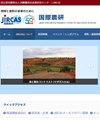用简单傅立叶分析精确分离主要潮汐分量的时间序列长度
IF 0.5
4区 农林科学
Q4 AGRICULTURE, MULTIDISCIPLINARY
引用次数: 0
摘要
将傅里叶分析应用于潮汐波动地下水观测时间序列数据,可以提取正弦潮汐分量,有助于精确利用潮汐响应方法估算含水层水力参数。为了准确地分离出具有特定周期的潮汐分量或准确地确定正弦潮汐分量的幅值和初始相位,必须为待分析的时间序列选择合适的长度。由于所分析的时间序列长度有限,用傅里叶分析从观测数据中分离潮汐分量时不可避免地会出现误差。利用傅立叶分析对包含主要或相对主要潮汐分量的不同长度的人工时间序列进行了广泛的研究,研究了潮汐分量隔离中两个来源的误差。在此基础上,提出了准确分离主要半日潮分量和日潮分量的时间序列长度选择标准。该准则及其推导为将傅里叶分析应用于观测时间序列数据以准确分离主要潮汐分量提供了实用指南。本文章由计算机程序翻译,如有差异,请以英文原文为准。
Time Series Lengths for the Accurate Isolation of Major Tidal Components by Simple Fourier Analysis
F ourier analysis applied to tidally fluctuating groundwater observation time series data can extract sinusoidal tidal components and help in the precise use of a tidal response method to estimate aquifer hydraulic parameters. To accurately isolate one tidal component with a specific period or accurately determine the amplitude and initial phase of the sinusoidal tidal component, an appropriate length for the time series to be analyzed must be selected. Errors are inevitable when Fourier analysis is used to isolate a tidal component from observation data due to the finite length of the analyzed time series. The errors stemming from two sources in the tidal-component isolation were extensively investigated using Fourier analyses of artificial time series with varying lengths that contained a major or relatively major tidal component. Based on the investigation, the recommended criteria for selecting time series lengths for the accurate isolation of major semidiurnal and diurnal tidal components were organized. The criteria, presented with their derivations, provide a practical guide for applying Fourier analysis to observation time series data to accurately isolate major tidal components.
求助全文
通过发布文献求助,成功后即可免费获取论文全文。
去求助
来源期刊
CiteScore
1.00
自引率
25.00%
发文量
42
审稿时长
>36 weeks
期刊介绍:
The Japan Agricultural Research Quarterly (JARQ) is a publication of the Japan International Research Center for Agricultural Sciences (JIRCAS), which provides readers overseas with the latest information on key achievements and developments in agricultural research in Japan, with the expectation that this information would contribute to the agricultural development of countries in tropical and subtropical regions.

 求助内容:
求助内容: 应助结果提醒方式:
应助结果提醒方式:


